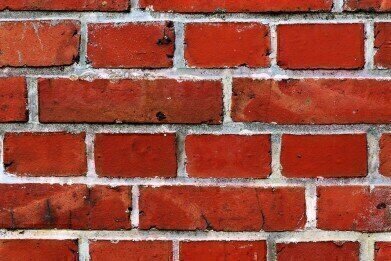Air Monitoring
Turning Plastic into Bricks Using a New Rubber Polymer
Jun 17 2020
A team of scientists from Australia have discovered a new method of recycling waste materials into bricks which could be used to construct houses. In a study conducted by Flinders University in Adelaide and published in the journal Chemistry Europe, the researchers were able to use a novel rubber polymer to convert PVC, sand or plant fibres into usable construction materials.
The findings represent a significant breakthrough and could mark a revolutionary turning point in the future of the construction industry, given that they present a viable alternative to all kinds of non-recyclable substances that are currently commonplace in the sector. What’s more, they present the secondary advantage of finding a positive purpose for waste materials which would otherwise end up in landfill or, worse yet, our seas and oceans.
The construction conundrum
In 1950, the world population stood at 2.5 billion. Since then, it has grown by between 1% and 2% each year to over 7.7 billion today. By the end of the century, it’s expected to approach 11 million. Obviously, the construction industry will have a huge part to play in ensuring all of those citizens of Mother Earth have a place to lay their heads – but it also carries a responsibility not to overly pollute the planet itself.
The current method of doing things necessarily entails the emissions of plenty of harmful toxins, which can not only be dangerous for human health, but also exacerbate climate change. Air quality at construction works and demolitions is a real concern for those living in the vicinity of the site, but construction is also a significant contributor towards greenhouse gases (GHGs) as well.
In fact, the industry is responsible for a staggering 18% of all GHG emissions worldwide. Meanwhile, concrete alone is responsible for 8% of CO2 emissions, meaning it produces more carbon than the entire aviation sector (which contributes 3% of CO2 emissions) and isn’t too far behind agriculture (responsible for 12%). Clearly, a more sustainable source of construction materials is sorely needed.
Rubber to the rescue
The Australian research team may have struck upon the ideal solution. By fashioning a new type of rubber polymer made from canola oil and sulphur, heating it to the desired temperature and mixing it with filler materials such as plastic, sand and plant fibres, the authors of the study were able to create truly sustainable alternatives for the construction industry.
Not only can their invention be used to create bricks, but it could even be used as an outright replacement for concrete itself, or as insulation. In its powdered form, it’s perfect for manufacturing bumpers, rubber coatings and tubing. By recycling waste materials and using them to replace highly polluting ones, the Flinders University technique effectively kills two birds with one stone.
“This new recycling method and new composites are an important step forward in making sustainable construction materials, and the rubber material can be repeatedly ground up and recycled,” explains Nic Lundquist, lead author on the study. “The rubber particles also can be first used to purify water and then repurposed into a rubber mat or tubing.”
Digital Edition
IET 34.2 March 2024
April 2024
Gas Detection - Biogas batch fermentation system for laboratory use with automatic gas analysis in real time Water/Wastewater - Upcycling sensors for sustainable nature management - Prist...
View all digital editions
Events
Apr 30 2024 Melbourne, Australia
Apr 30 2024 Birmingham, UK
May 03 2024 Seoul, South Korea
May 05 2024 Seville, Spain
May 06 2024 Minneapolis, MN, USA


















